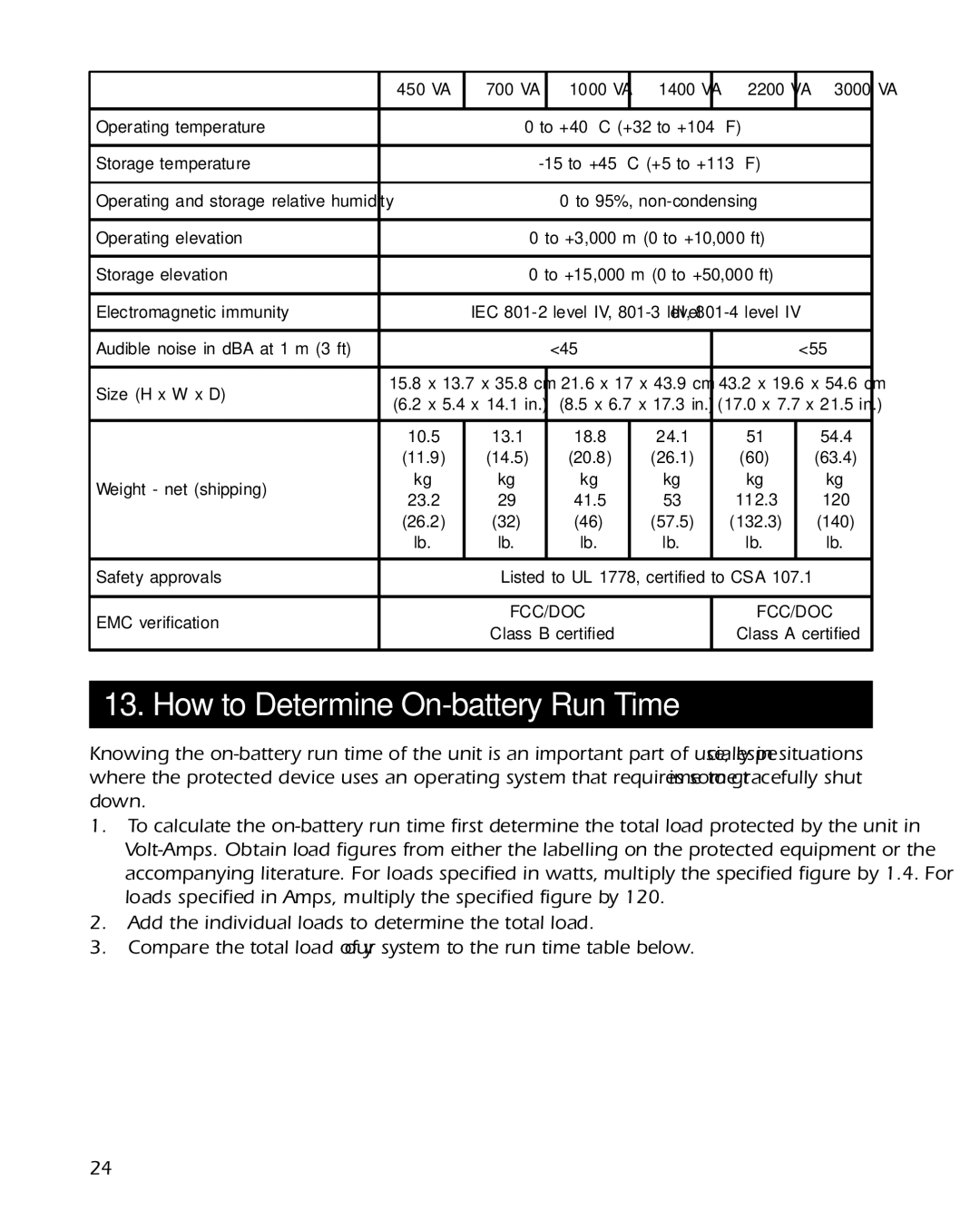| 450 VA |
| 700 VA |
| 1000 VA | 1400 VA |
| 2200 VA |
| 3000 VA |
|
|
|
|
|
|
|
|
| ||
Operating temperature |
|
| 0 to +40 °C (+32 to +104 °F) |
| ||||||
|
|
|
|
|
|
|
|
| ||
Storage temperature |
|
|
| |||||||
|
|
|
|
|
|
|
|
|
| |
Operating and storage relative humidity |
|
| 0 to 95%, |
|
|
| ||||
|
|
|
|
|
|
|
|
| ||
Operating elevation |
|
| 0 to +3,000 m (0 to +10,000 ft) |
| ||||||
|
|
|
|
|
|
|
|
| ||
Storage elevation |
|
| 0 to +15,000 m (0 to +50,000 ft) |
| ||||||
|
|
|
|
|
|
|
|
| ||
Electromagnetic immunity |
| IEC |
| |||||||
|
|
|
|
|
|
|
|
|
|
|
Audible noise in dBA at 1 m (3 ft) |
| <45 |
|
|
| <55 |
| |||
|
|
|
|
|
|
|
|
| ||
Size (H x W x D) | 15.8 x 13.7 x 35.8 cm |
| 21.6 x 17 x 43.9 cm |
| 43.2 x 19.6 x 54.6 cm | |||||
(6.2 x 5.4 x 14.1 in.) |
| (8.5 x 6.7 x 17.3 in.) |
| (17.0 x 7.7 x 21.5 in.) | ||||||
|
|
| ||||||||
|
|
|
|
|
|
|
|
|
|
|
| 10.5 |
| 13.1 |
| 18.8 | 24.1 |
| 51 |
| 54.4 |
| (11.9) |
| (14.5) |
| (20.8) | (26.1) |
| (60) |
| (63.4) |
Weight - net (shipping) | kg |
| kg |
| kg | kg |
| kg |
| kg |
23.2 |
| 29 |
| 41.5 | 53 |
| 112.3 |
| 120 | |
|
|
|
|
| ||||||
| (26.2) |
| (32) |
| (46) | (57.5) |
| (132.3) |
| (140) |
| lb. |
| lb. |
| lb. | lb. |
| lb. |
| lb. |
|
|
|
|
|
|
|
|
| ||
Safety approvals |
|
| Listed to UL 1778, certified to CSA 107.1 |
| ||||||
|
|
|
|
|
|
|
|
| ||
EMC verification |
|
| FCC/DOC |
|
| FCC/DOC | ||||
|
| Class B certified |
|
| Class A certified | |||||
|
|
|
|
| ||||||
|
|
|
|
|
|
|
|
|
|
|
13. How to Determine On-battery Run Time
Knowing the
1.To calculate the
2.Add the individual loads to determine the total load.
3.Compare the total load of your system to the run time table below.
24
